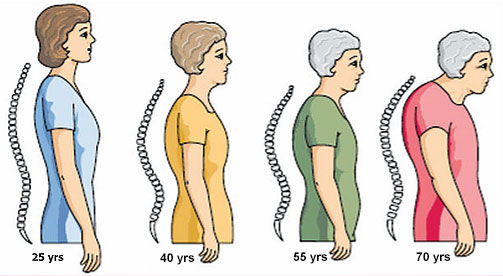Bones like all the other living organs and tissues, are also living tissue that go through the same rejuvenation cycle as the cells in our body. Bone is composed of the mineral or hydroxyapatite, organic or collagen type 1, water, non-collagenous proteins and other components.
During the bone rejuvenation process, when the production of new bone material is not in synchronization with the removal of the old bone, this causes the bone to weaken. This then causes the bones to become very brittle, so that coughing, falls, or even slight stress, such as bending over can cause a fracture. A patient with such fragile bones is diagnosed to have Osteoporosis. Fractures related to osteoporosis, ordinarily occurs either in the wrist, the hip or along the spine. It affects both men and women alike, but is predominantly seen to occur in especially older Asian and Caucasian women. Women past their menopause are in the high risk category to be affected by Osteoporosis.

In the early stages of Osteoporosis, no symptoms reveal themselves until the bones have been weakened and you will then see signs such as:
The aging generation does unavoidably face certain risks that are not within their control; risks such as:
The causes stated above are but a few, as there are other factors such as dietary factors, consumption of alcohol, gastrointestinal surgery, low calcium, use of tobacco, lifestyle choices, gastric reflux and much more that can cause osteoporosis.
